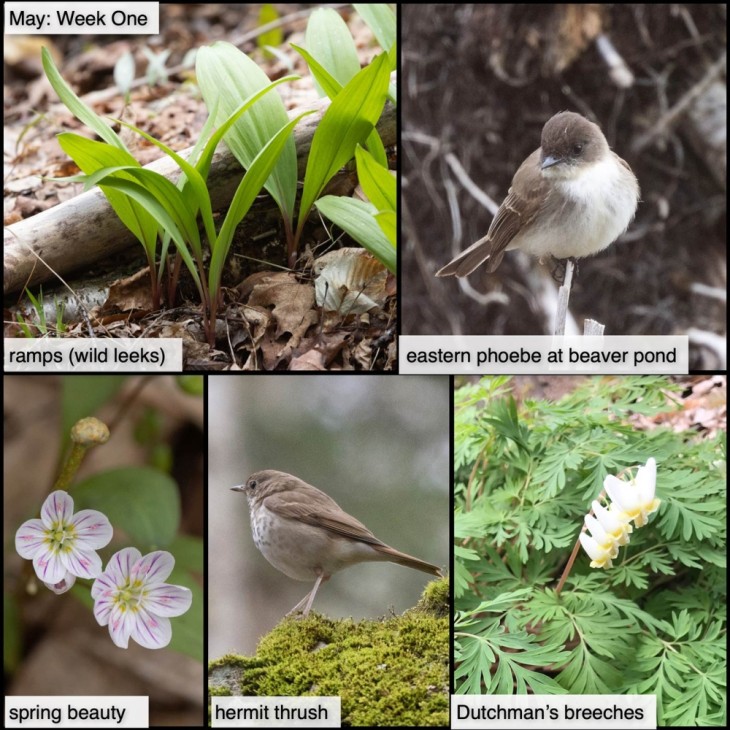This Week in the Woods, light green patches of ramps (wild leeks) have appeared in hardwood forests. We most often find them growing in nutrient rich, moist soils along forest streams. Ramps are easy to identify by their combination of rosy red stems, lily-like light green leaves with parallel veins, and onion scent. If you nibble on a leaf, it should have an onion taste, and a spicy kick.
Although these spring ephemerals are a foraging favorite, they spread slowly, and are vulnerable to over-collection. So, if you harvest them, be thoughtful about it – first asking landowner permission, of course, but also limiting collection to areas where there are thriving patches, and taking only a few plants. Better yet – just pick some leaves, not more than one to a plant, and leave the bulbs undisturbed in the soil. The chopped-up leaves make a wonderful addition to spring omelets. Here’s more information about ramps and a recipe from Northern Woodlands’ foraging columnist Ben Lord.
Eastern phoebes have been back for a while now, and although they’re a common sight in yards, you’ll also often find them in the woods near wetlands. We watched one of these flycatchers repeatedly swooping down from a perch to dip its beak in a beaver pond. Cornell’s Birds of the World site notes two published accounts of the birds taking small fish…but another and perhaps more likely explanation is that it was plucking tiny insects off the water’s surface.
Spring beauty wildflowers (two similar looking species) are blooming in abundance now. They’re so small that they can be hard to inspect closely, but if you use a hand lens or the camera on your phone, you’ll be able to see their purple- or pink- striped petals and their anthers loaded with pink pollen. On dry, sunny days, keep an eye out for tiny female spring beauty miner bees (Andrena erigeniae) visiting the flowers, and the males loitering nearby. The females pack the pink pollen on their back legs, and carry it back to their underground nests to stow as food for their future larvae. You can see an illustration of a spring beauty miner bee and learn about some other common native forest bees in this Spring 2022 article from Northern Woodlands.
Hermit thrushes are back, and skulking around the forest, often (as in this photo) perching on top of rocks or logs above trails. Unlike their extroverted robin cousins, they’re wary woods birds, and you typically either see them or you hear them. It’s a lucky day when both happen at the same time.
Yet another spring wildflower in bloom right now is Dutchman’s breeches, a wild cousin (genus Dicentra) of bleeding-heart cultivars that you see in gardens. Dutchman’s breeches get their name from their white, forked flowers which apparently at some point reminded some early plant namer of the sartorial choices of gentlemen from the Netherlands…though to be fair, in the 16th to early 17th centuries, poofy pants wearing was common in many countries, including among Englishmen (looking at you, Sir Walter Raleigh).
What have you noticed in the woods this week? Submit a recent photo for possible inclusion in our monthly online Reader Photo Gallery.



Discussion *